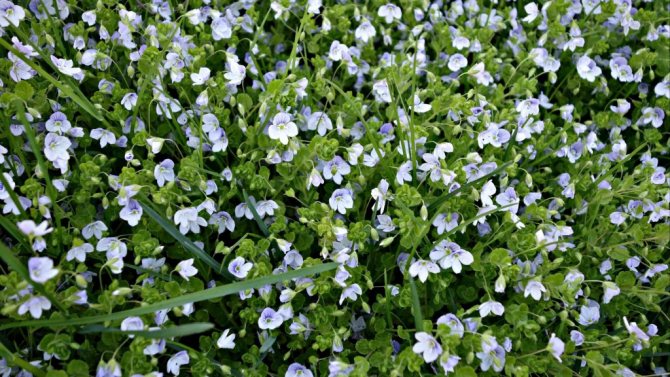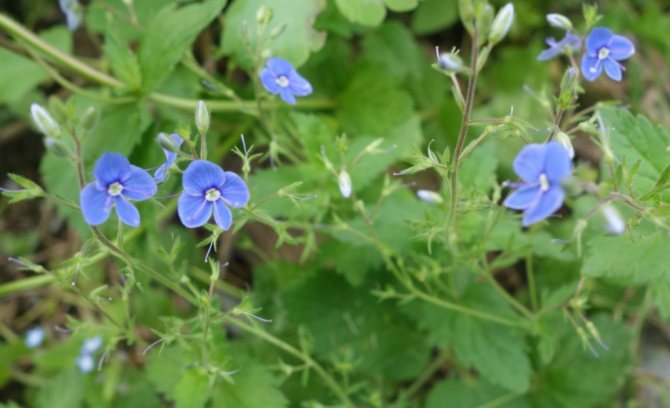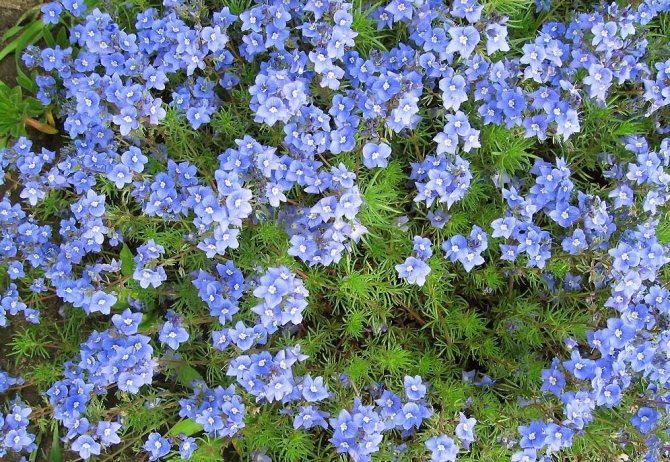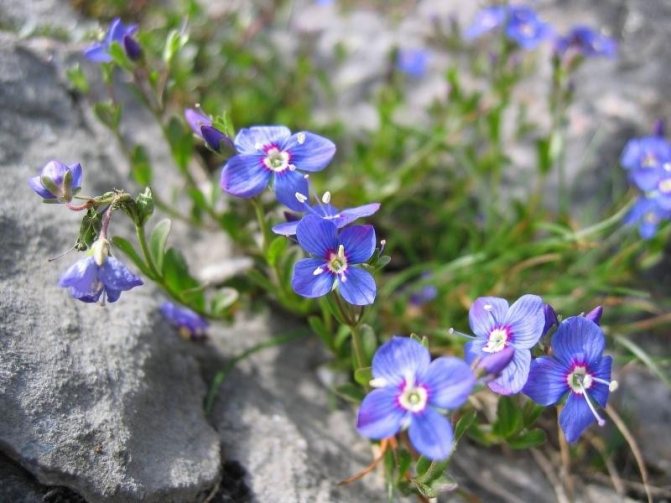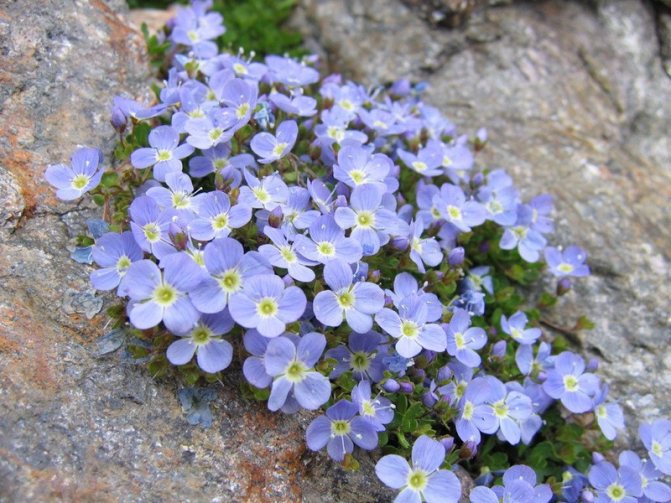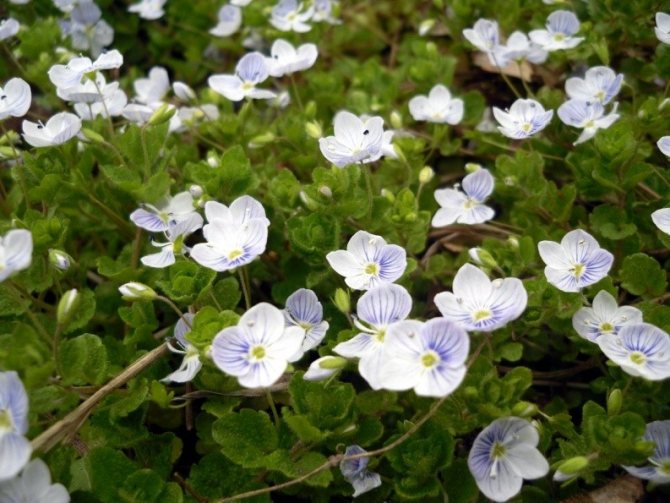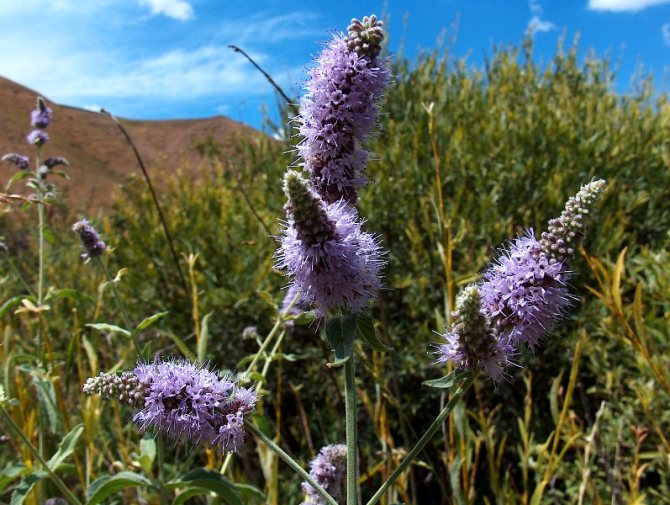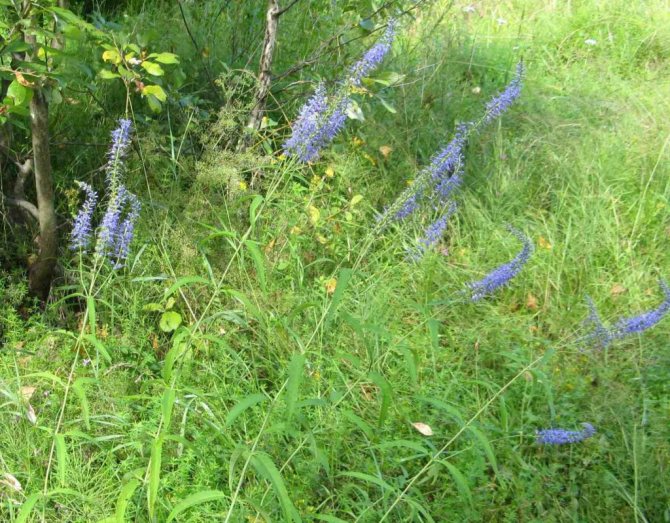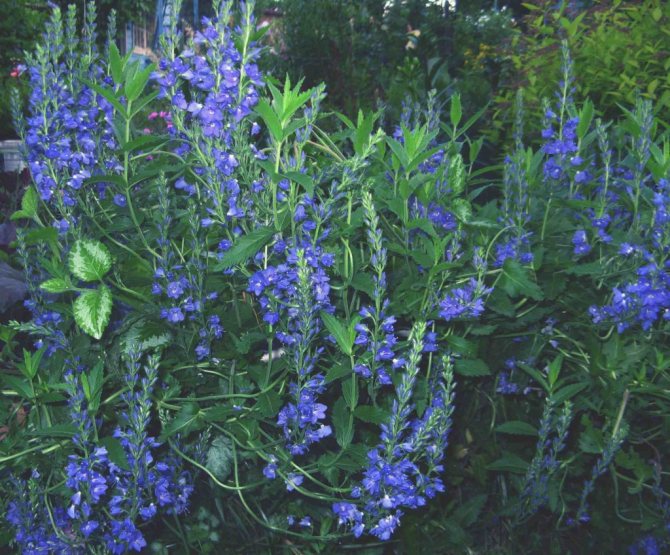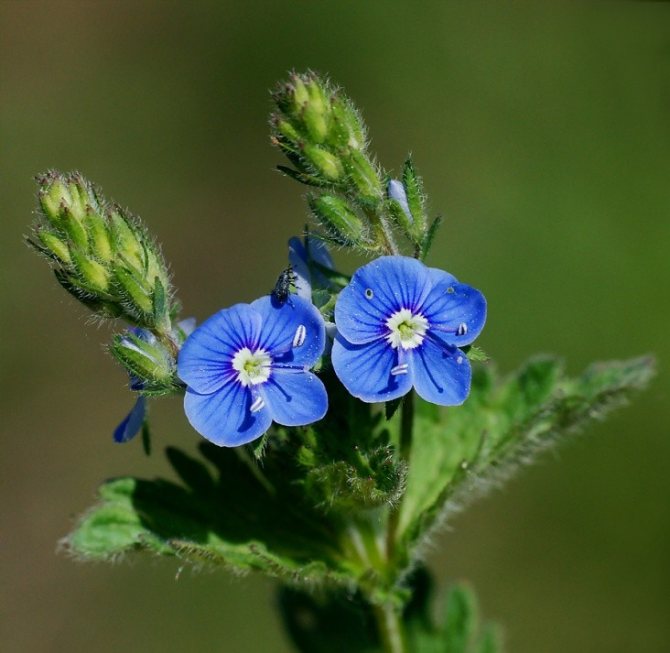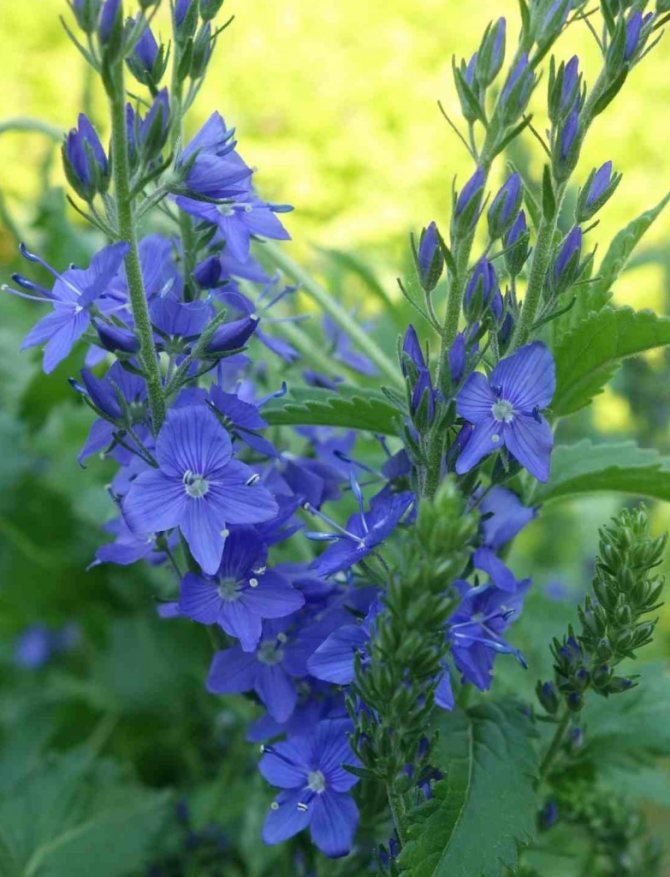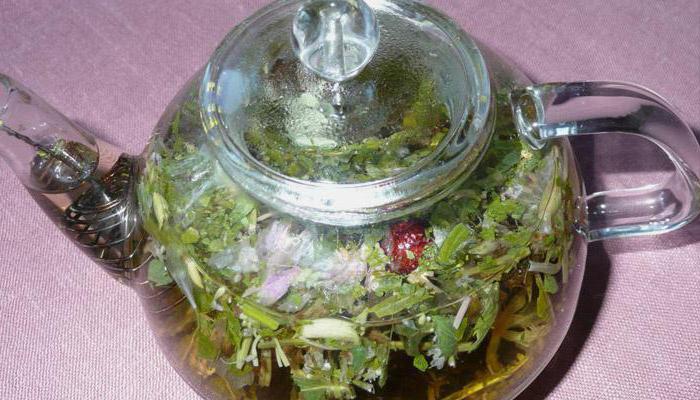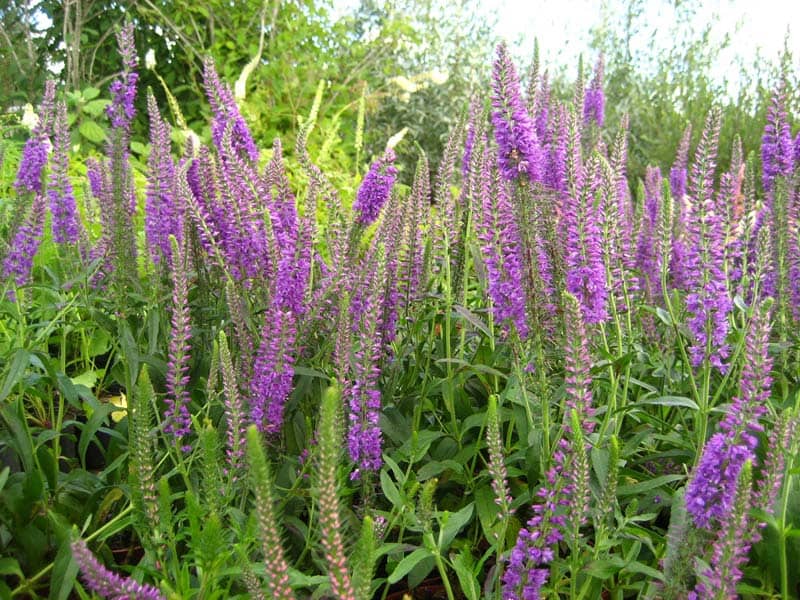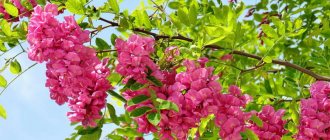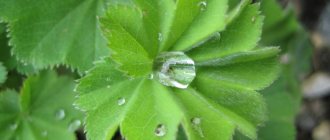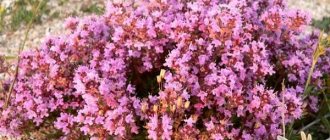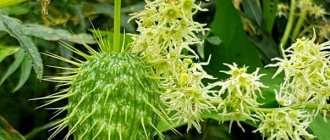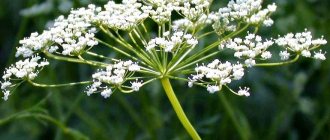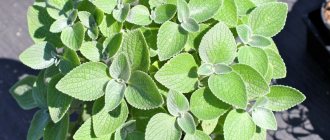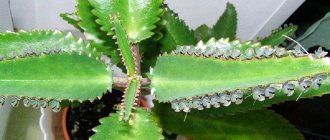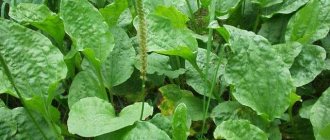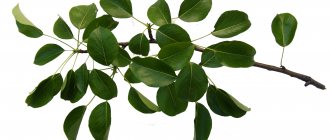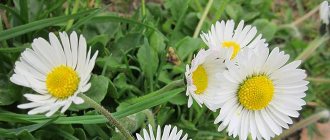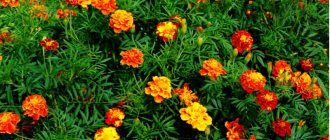This plant looks like a forget-me-not, which is why it is often confused with this flower. There are differences between plants. Veronica officinalis has creeping stems intertwining at the surface of the earth. From the outside, these weaves resemble a rug. The corolla of the Veronica flower is painted in a dark color, which makes them stand out among the trees, near the roadsides, in the bushes. The plant reaches a height of thirty centimeters. The stem of the Veronica is creeping, in the side of the base it is covered with twigs that form a turf. Stem - ascending upward, many hairs grow on it. Veronica's leaves are tapering, they are harsh. The flowers of the plant are white and lilac-light blue. Veronica officinalis blooms all three months of summer. This type of Veronica can be found between bushes in a grove, in a forest with coniferous trees, less grass likes to grow in a strip of black soil. Most often found in the forest and forest-steppe. The plant is odorless when fresh, but when dry it will give you a delicious aroma. The taste of Veronica officinalis is tart with bitterness.
Veronica officinalis herb. Botanical characteristic
According to legend, the plant got its name from a girl who turned into a medicinal herb to heal her beloved. The very name Veronica in Greek means "bringing victory."
Veronica (snake grass, as it is often called) has several hundred varieties, for example, Veronica Jacquin. The plant is a grass with a winding root, the height of which does not exceed 30 cm. The lower part of the Veronica grows in a horizontal direction, the upper one gradually turns into a vertical one. Leaves with small teeth are arranged on short cuttings. The color of the leaf blades is gray-green.
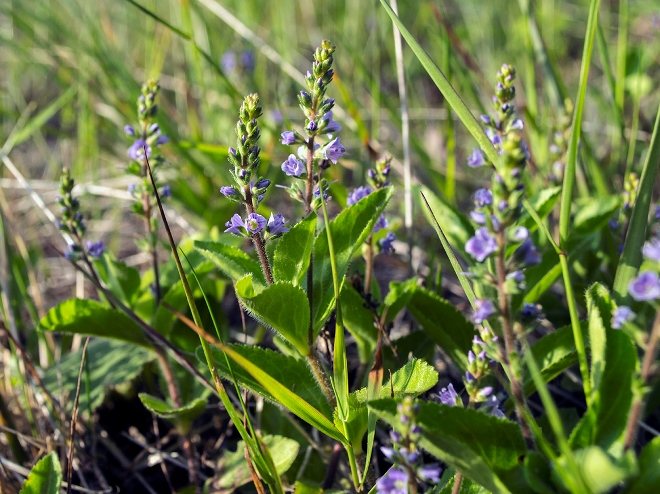
photo of a plant in its natural habitat
The fruit of the plant is a light brown box. On the stem of Veronica there are blue or lilac flowers with 4 or 5 petals. The flowering of the grass continues all summer long.
Where a variety of Veronica grows
In Russia, the herb is found in Siberia, the Caucasus and the western part of the country. Veronica can be found in the European steppes and forest-steppes, in North America. The plant is suitable for open and well-lit places - glades, forest edges, meadows.
Chemical composition
The chemical composition of the plant has not been studied thoroughly enough. Among the detected components:
- flavonoids;
- organic acids;
- vitamins;
- trace elements;
- essential oils.
The plant contains aromatic and tannin components. Veronica contains tannin, saponins and glycosides.
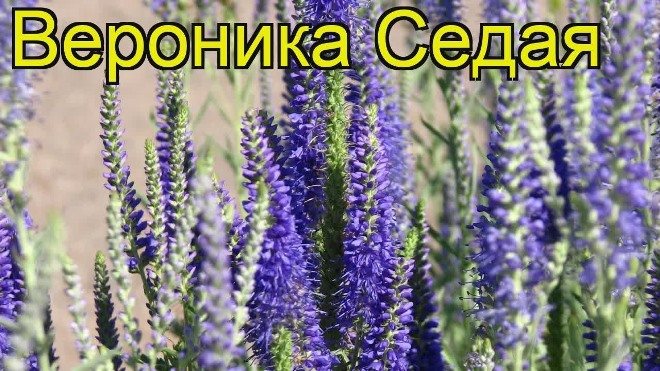

the plant has healing properties and is used in the treatment and prevention of pathological conditions
Agrotechnics
As I said above, the plant is completely unpretentious. It almost by itself reproduces well and grows quickly, so it is convenient to use it in monoclumbes. In order for the flowers to be beautiful, you must follow these rules:
- It is best to plant Veronica spikelet in a bright place where there is a lot of sun and air.
- Any soil is suitable, loose loam is ideal due to good drainage.
- It is better to under-water the plant than over-water it - it is rather drought-resistant, but does not like too wet soil.
- An interesting fact - even if you step on the bushes, after a while they straighten themselves.
- So that moisture is normally distributed, the soil can be mulched.
- If the weather is rainy, the plant may be sick. You can avoid this with the help of preventive measures.
- Tall species of Veronica are best tied up.
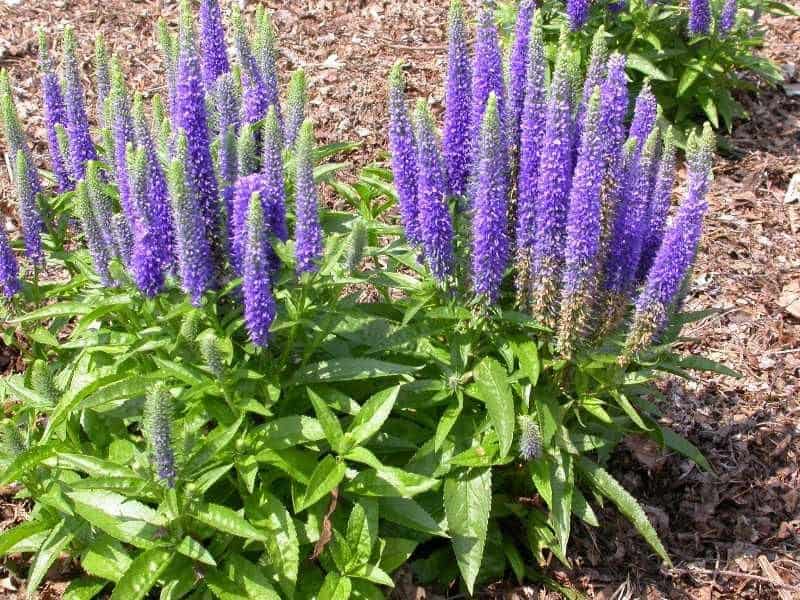

Contraindications for use
When using a medicinal plant, Veronica, both beneficial properties and contraindications are taken into account. It is forbidden to use the plant:
- with hypertension or a tendency to high blood pressure;
- with diabetes mellitus;
- with diseases of the cardiovascular system.
Individual intolerance to the plant or other components of products based on it is also possible. It is necessary to monitor the dosage of drugs, which include Veronica officinalis: medicinal properties do not work if the dose is underestimated and can poison in case of an overdose.
How to collect and store a plant
Collection and procurement rules:
- for treatment, stems, leaves and flowers are used;
- collect Veronica officinalis only during flowering;
- the cut grass is sorted out and dried in the attic or in a dark place;
- during drying, the grass must not be strongly stirred so that the petals on the flowers do not crumble and lose color.
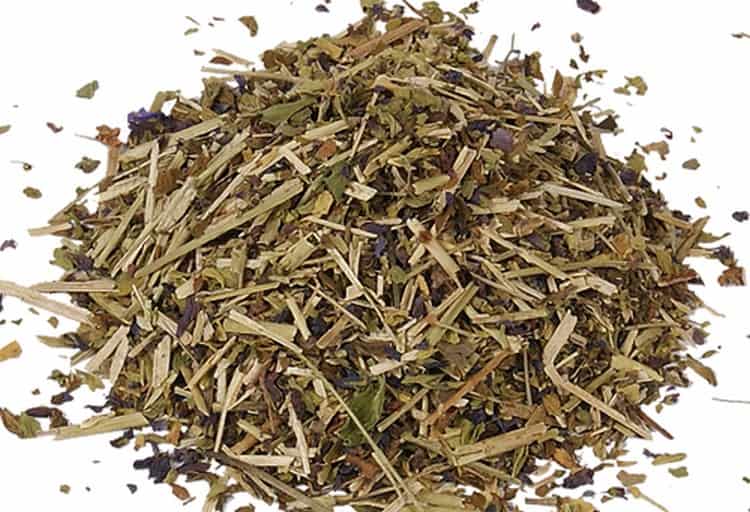

Fresh herbs of Veronica officinalis do not have a pronounced smell. But properly harvested dry grass smells good and has a tart, bitter taste. It is the appearance of such a pleasant smell that is an indicator of the correct preparation of medicinal raw materials. The herb is stored in a dry place for up to 5 years.
The field bindweed blooms for a very long time, but only the herb and plant roots are used in herbalist recipes.
Are you familiar with other uses for this herb? Share your knowledge in the comments, we will be grateful to you.
Indications for use
Before using a particular prescription, you must get your healthcare provider's approval. Most often, Veronica is taken under the following conditions:
- stomach diseases (with low acidity);
- respiratory tract diseases;
- disorders of the digestive tract (eg, diarrhea);
- diseases of the genitourinary system;
- chronic fatigue syndrome;
- migraine;
- skin diseases;
- diseases of the nervous system;
- gout;
- menopause.


for the preparation of medicinal products, you can use pharmacy raw materials or prepared yourself
Traditional medicine recipes
Veronica is used in the following recipes:
- Tea. 0.5-1 tsp plants must be poured with 1 glass of boiling water. Tea is drunk warm, adding a spoonful of honey. The drink is taken for skin and kidney diseases, scrofula, rheumatism. Tea is used when coughing to thin phlegm. It is not recommended to drink more than 1-2 cups of the product per day.
- Infusion with goat milk. For the preparation of the medicine, freshly squeezed juice of Veronica is used, 3-4 tbsp. l. which is mixed with 200 g of warmed goat's milk (it is not recommended to replace milk with other animals, for example, a cow). It is necessary to insist on the medicine for at least 1.5-2 hours. The drink is taken in 4-5 tsp. during the day. Milk should not have time to turn sour. The remedy is most often used in the treatment of inflammatory processes in the kidneys.
- Ointment. To prepare the product, mix 100 g of fresh chopped grass with 100-200 g of any animal fat. It is undesirable to use industrial creams, since the finished cosmetic products contain other active ingredients. They will interfere with Veronica's action. The product is applied to the skin and left for 20-30 minutes, then washed off with warm water. The ointment is used to treat skin conditions.
- Tincture. 100 freshly squeezed grass juice is mixed with 200 g of vodka. It is necessary to infuse the medicine for 10-15 days. The tincture is used to treat fungal diseases of the scalp.
- Bath.The use is recommended not only for skin diseases. The procedure eases the condition of the patient with ARVI. To prepare a solution of 1 liter of boiling water, pour a mixture of 2-3 tbsp. l. veronica and 2-3 st. l. calendula. The broth is infused for 10-15 minutes, and then it is diluted with 2-3 liters of warm water. The procedure takes 15-20 minutes.
Means for external use from the herb of Veronica officinalis should be used in courses of 20-30 days. Medicines for oral administration are taken in courses of 10-15 days. If after the first dose the patient's well-being has deteriorated, the remedy should be discarded.
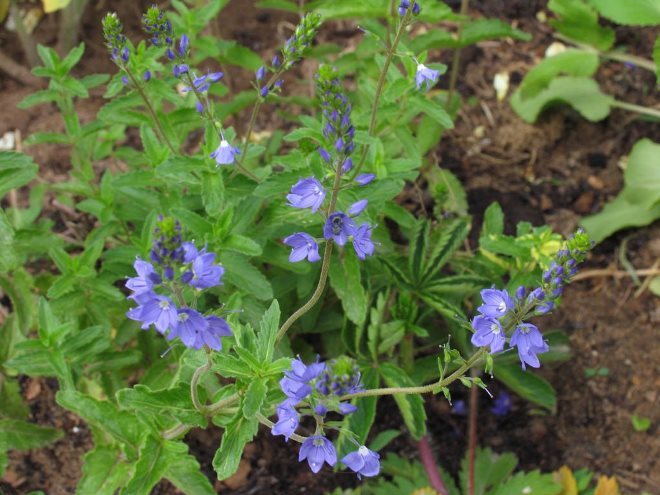

the plant is used for cosmetic purposes, as well as in veterinary medicine and everyday life
Improved appetite
This recipe is also great at solving appetite problems. In this variant, it is necessary to use 100 ml of infusion. Consume four times a day. The course lasts four months.


Veronica is a truly unique pharmaceutical herb that can help you cope with various diseases. It is important to remember that you should consult your doctor before using traditional medicine methods. In particular, self-medication is dangerous in acute forms of the disease.
Application in cosmetology, veterinary medicine and in everyday life
Wild plants can be used as natural cosmetics and for the treatment of pets. Housewives use Veronica in everyday life.
Cosmetics
Cosmetic recipes:
- Mask. Veronica is used to prepare a face mask for normal skin types. Only fresh herb can be used. 200-300 g of plants are crushed with a mixer. There is no need to add additional natural ingredients to the mixture. The prepared gruel is applied to the face, avoiding the area around the lips and eyes. The mask is left for 15-20 minutes, then washed off with warm water. It is recommended to repeat the procedure 1-2 times a week. The mask rejuvenates the skin and improves its tone.
- Body peeling. To prepare a cosmetic product, 300-400 g of gruel is made from fresh Veronica, combined with 1 tbsp. l. fine-grained salt and 100 g of soap shavings. The components are mixed until a homogeneous mass is formed and rubbed into the skin while taking a shower or bath. Peeling is used no more than 2-3 times a month. The product is more suitable for normal to oily skin.
- Decoction for hair. The remedy from the Veronica officinalis plant is suitable for all hair types. For the preparation of the broth 2-3 tsp. dried herbs are poured with 1 glass of boiling water and insisted for 20-30 minutes. Apply a warm, but not hot product to clean, damp hair. Rinse off the broth is optional. You can repeat the procedure weekly.
Veterinary use
The herb is used to treat bloody diarrhea in cattle. 400-500 g of the dried plant must be poured with 3 liters of boiling water and infused for 30-40 minutes. During the day, the sick animal should drink the broth. The medicine is given until the diarrhea stops completely.
Domestic use
In everyday life, Veronica is used in cooking. Dried and shredded herbs are added to meat and fish dishes. The plant is used to improve the taste of cognacs and liqueurs.
Veronica gives an unusual taste to baked goods. The herb is recommended for making pizza.
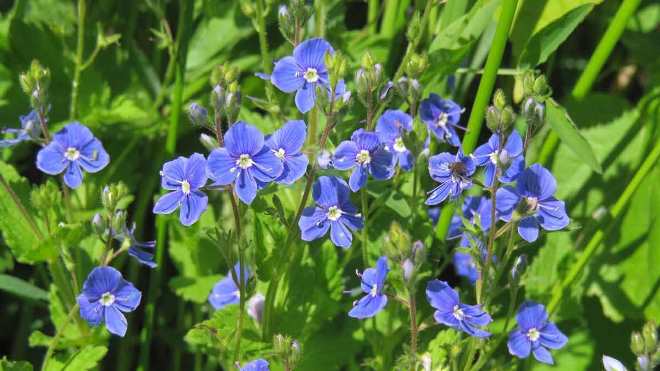

you need to harvest Veronica at the beginning of flowering in ecologically clean places
Menopause symptoms
Older women often experience discomfort during physiological changes in the body. To relieve stress and symptoms of menopause, traditional healers suggest making a decoction of the following ingredients:
- Veronica is medicinal;
- wormwood;
- purple;
- birch;
- corn silk;
- licorice;
- chamomile;
- peony petals;
- Yarrow.


Approximately 20 g of the solution is poured with hot water (300 ml), covered with a lid, infused and kept for 2 hours in a warm place. The filtered medicine is taken 100 ml three times a day.The period of therapeutic treatment lasts no more than 4 months.
Growing features
Outdoor care and planting
Maintenance is very simple. When planting, you need to pay attention to the ground. When collecting the substrate, you need to add the necessary components, depending on the variety planted. A high level of drought tolerance does not mean that there is no need to water. Most varieties like moderate humidity. It is required to cut off wilted flowers and so the decorative appearance of the plant remains longer, this can also achieve re-flowering.
The culture has a lot of advantages: generous colors, unassuming, simple-minded in care. Basic rules of care:
- Loves the sun. It is planted on the sunny side of the garden. In darkening, it blooms poorly and loses its decorative effect.
- Watering the plants depends on the variety. Creeping varieties need systematic watering, varieties with erect long stems tolerate dryness and heat well.
- Veronica needs to be fed for a beautiful generous flowering. The flower bed is watered with liquid organic fertilizer during the flowering period. Wild varieties do without feeding.
- Varieties with erect stems are tied up so that the wind does not break them.
- For wintering in perennial varieties, the ground part is cut off. The roots are covered with foliage or humus.
- In the open field, it is unpretentious to the type of land and shows great resistance to diseases and pests. However, it is necessary to remove sick and faded inflorescences and processes. If spotting appears, treat it with a fungicide.

